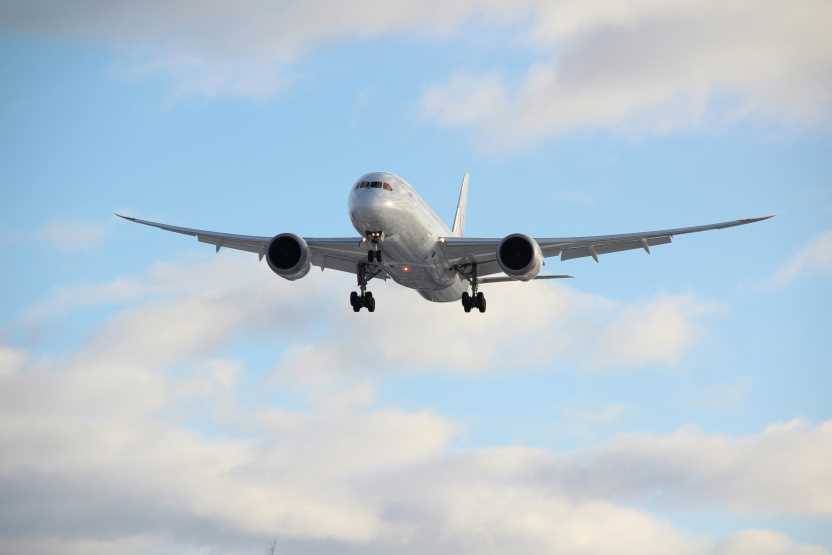Why There Are So Much Changes, Route Cuts, Low Loads, and Airline Realignments, Here Are Eight Flights Disappear Across the Atlantic as United, Norse Atlantic Airways, Lufthansa, KLM Royal Dutch, Aer Lingus, American, Rework Schedules for Summer Travel - Travel And Tour World
Saturday, May 24, 2025

Why there are so much changes in transatlantic air travel right now is no mystery—it’s a strategic storm unfolding in real time. Route cuts, low loads, and sudden airline realignments are rewriting how, when, and where we fly. This summer, the skies over the Atlantic are shifting fast. And the proof? Eight flights disappear across the Atlantic, leaving travelers—and even insiders—wondering what comes next.
The biggest names are making bold moves. United, Norse Atlantic Airways, Lufthansa, KLM Royal Dutch, Aer Lingus, and American are all pulling or tweaking flights ahead of peak summer travel. These aren’t small adjustments. These are major cuts that reflect deeper issues—ranging from low passenger demand to delivery delays and seasonal strategy shifts.
So, why there are so much changes right before July and August? Because route cuts are easier than flying empty planes. Because low loads damage profitability. Because airline realignments are key to staying competitive in 2025’s unpredictable landscape. And now, eight direct connections between the U.S. and Europe are gone—just like that.
As United, Norse Atlantic Airways, Lufthansa, KLM Royal Dutch, Aer Lingus, and American rework their schedules, travelers are left with fewer options, tighter connections, and new decisions to make. These eight flights disappear across the Atlantic, and with them, so does the convenience and flexibility many flyers have come to expect.
This is the new reality. The question isn’t just why there are so much changes—it’s what those changes mean for your next trip.
Why there are so much changes happening in the skies right now is the question on every traveler’s mind. Route cuts, low loads, and airline realignments are no longer the exception—they’re becoming the new normal. As we head into the heart of the travel season, carriers are scrambling to adapt. The big reveal? Eight flights disappear across the Atlantic as part of a dramatic shift.
But why there are so much changes this close to summer 2025? The reasons are layered and urgent. From low loads that hurt profitability to route cuts driven by fleet shortages and reshuffled alliances, airlines are moving fast. And yes, airline realignments are at the core of it all—redrawing maps, rerouting planes, and reshaping travel patterns.
Now, the disappearance of these eight flights across the Atlantic isn’t just a numbers game. It’s a signal. A shift. A wake-up call for both US and European travelers. Route cuts hurt access. Low loads hurt economics. Airline realignments hurt predictability.
Moreover, these eight flights disappearing across the Atlantic are tied to wider strategies. Leisure routes are thinning. Long-haul networks are shrinking. Partners are being swapped. And passengers? They’re caught in the crosswinds of efficiency and uncertainty.
So if you’re wondering why there are so much changes, this is it. Behind every route cut, every low load, and every airline realignment, there’s a story. A shift. A strategic move. And this summer, those moves are making headlines—and changing how we fly.
As the summer travel season rapidly approaches, airlines are trimming routes in a wave of sudden schedule changes that could disrupt international plans for many flyers. According to new data from Cirium, between the U.S. and Europe in , and the impact on travelers is both emotional and logistical.
While some of these flights were planned as seasonal services, others are being , weak profitability, or . In one case, the route is simply being —a cost-saving maneuver that signals broader restructuring within major carrier networks.
From Miami to Paris and Las Vegas to Dublin, the route map is shifting. The following routes are being removed from airline schedules:
United Airlines’ experiment with started back in 2022 and saw modest success during peak months. However, data from the U.S. Department of Transportation paints a different picture for 2024—with load factors averaging only 67%. While August saw an 84% load, other months, particularly in the off-peak season, dragged the performance down.
The route has not yet reappeared in United’s schedule for winter 2025–2026. That’s a telling sign the airline may abandon this niche leisure destination entirely, despite Tenerife’s appeal to vacationers. The underlying issue? Leisure markets often bring , even with decent seat occupancy.
Low-cost long-haul airline is also retreating. The airline is ending after poor performance throughout 2024. Average loads hovered between 76% and 78%—respectable numbers on paper, but not enough to cover operational costs when pricing is deeply discounted.
These changes are part of a broader strategic reset. Norse has already announced the end of for the winter season, effectively scaling down its presence at the Florida gateway. With 12 U.S. routes cut in three years, Norse is learning fast how unforgiving the transatlantic market can be—especially for budget players.
Meanwhile, is offloading its service to its lower-cost sibling, . Starting May 2, Discover takes over the route with seasonal operations, replacing Lufthansa’s year-round model. Load factors hovered around 76% last year, suggesting the route couldn’t justify Lufthansa’s premium operating costs.
Discover Airlines is designed for , and Minneapolis fits that mold. This handoff reflects a growing trend: full-service carriers are shifting mid-performing routes to budget-friendly subsidiaries to cut costs without losing network coverage.
is also feeling the squeeze—but from the , not passenger demand. Its service, flown daily with a Boeing 787, has been cut due to of the aircraft type. This mechanical bottleneck highlights how dependent modern airline strategies are on manufacturer timelines, and how delays ripple across entire route networks.
While American may resume the route later, it leaves a noticeable gap during peak summer when Paris remains one of the top U.S. traveler destinations.
Not all cuts are permanent. Seasonal routes from (Las Vegas to Dublin), (Miami to Amsterdam), and (Miami to Munich) are ending as expected for the summer schedule changeover. These services typically ramp up in spring and wind down before fall, though demand fluctuations may alter future seasonality trends.
Still, the absence of these flights during the core July–August travel window may come as a surprise to passengers who’ve come to rely on these direct options.
While eight flights may seem like a drop in the aviation ocean, these cuts signal a broader trend: . In an age of data-driven planning, load factors, yields, and aircraft availability drive decisions—not just demand alone.
For travelers, this means fewer direct options, potential price shifts, and increased competition for available seats on remaining routes. If your go-to flight has vanished, it may not return. Flexibility and early booking have never been more essential.
And as summer 2025 approaches, the industry continues to evolve—fast. Airlines are pivoting, partnerships are deepening, and performance is king.
Tags: Aer Lingus, airline route cuts, American Airlines, Amsterdam, Aviation Industry News, berlin, Discover Airlines, Dublin, Frankfurt, klm, klm royal dutch airlines, Las Vegas, lufthansa, Miami, Miami International Airport, minneapolis, Minneapolis-St. Paul International Airport, newark, newark liberty international airport, Norse Atlantic Airways, oslo, Paris, summer 2025 air travel, Tenerife, transatlantic flights, U.S.–Europe flights, United Airlines










